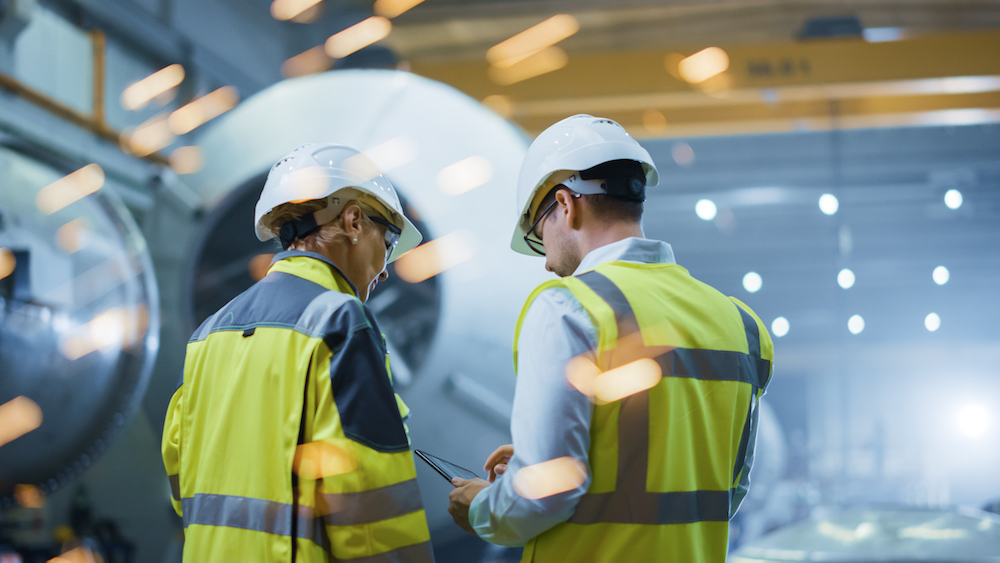
Manufacturing and construction are ever-evolving landscapes. Knowing what variables are in play at the intersection of these two segments is vital. After all, it helps business leaders make informed decisions for the future that drive growth.
Recently, we’ve had a chance to sit down and discuss the parallels between manufacturing investment and construction headaches. Here are some of the key takeaways from those talks.
A Potential Hockey Stick Trend in Manufacturing Investment
There’s an interesting graph we’ve come across that illustrates a trend in manufacturing investment over the past few years — and its shape resembles that of a hockey stick. The graph hints at a significant re-shoring movement in the manufacturing investment world but other factors are involved too.
COVID exposed the limitations of far-flung logistics production, which has led businesses to invest in new plants to bring production back to the United States. American investment activity has also benefited from the CHIPS and Science Act and Inflation Reduction Act passed by Congress last year. The first includes incentives for investing in semi-conductor production and the second incentivizes local production for electric vehicles and domestically produced products. So despite slowing manufacturing activity in the first half of 2023, new plant construction is at levels not seen since 1991.
Red Flags Around Rising Labor Costs in Construction
With construction activity booming, the supply of construction labor remains tight. Too many projects are chasing too few construction workers. Investments described above involve huge projects that require large numbers of workers. Locally, a new electric vehicle battery plant near Memphis is drawing construction labor from a large area, prompting a surge in demand for construction resources and driving up prices for labor, support equipment, and related services.
Relating Construction Delays to Capital Spending Decisions
In normal times, business investment decisions are influenced by market conditions, economic uncertainty, and project economics. Recent construction material inflation seen last year, coupled with the construction labor inflation now being felt, has added an economic uncertainty. Uncertainty typically leads to a more cautious capital investment approach, delaying capital spending decisions.
Additionally, the retirement of experienced project managers, who successfully managed projects in the past, has contributed to organizational hesitancy or difficulty making project-related decisions. This creates a knowledge gap where personnel feel they lack the experience and the decision-making capabilities to effectively manage projects.
A State of Risk Aversion in the Short and Long Run
Building off the sentiments above, risk aversion is emerging again as a significant factor affecting how businesses approach manufacturing investment and their related construction projects. Current projects experiencing run-away budgets and timeline delays are a growing trend leading to a risk-averse mindset among decision makers.
Increased project risks can jeopardize corporate financial stability, which in turn leads to more cautious decision-making. Temporary project delay makes sense when conditions are unfavorable but in the long run, new plant investment is ultimately needed by any business that wants to grow and remain ahead of their competition.
What’s Next?
We’ve covered quite a few trends and challenges currently happening at the intersection of investment and construction. To recap, we’ve touched on how:
- The trend of re-shoring in manufacturing is driving new investment as companies shift back to localized production.
- Government investment is driving new capital investment in completely new industries.
- The challenge of labor-intensive construction is impacting risk aversion of new capital spending decisions in all industries.
As businesses navigate these trends and challenges, careful consideration and strategic decision-making will be key in capitalizing on new opportunities, ensuring the success of construction projects, and ultimately growing the business.

